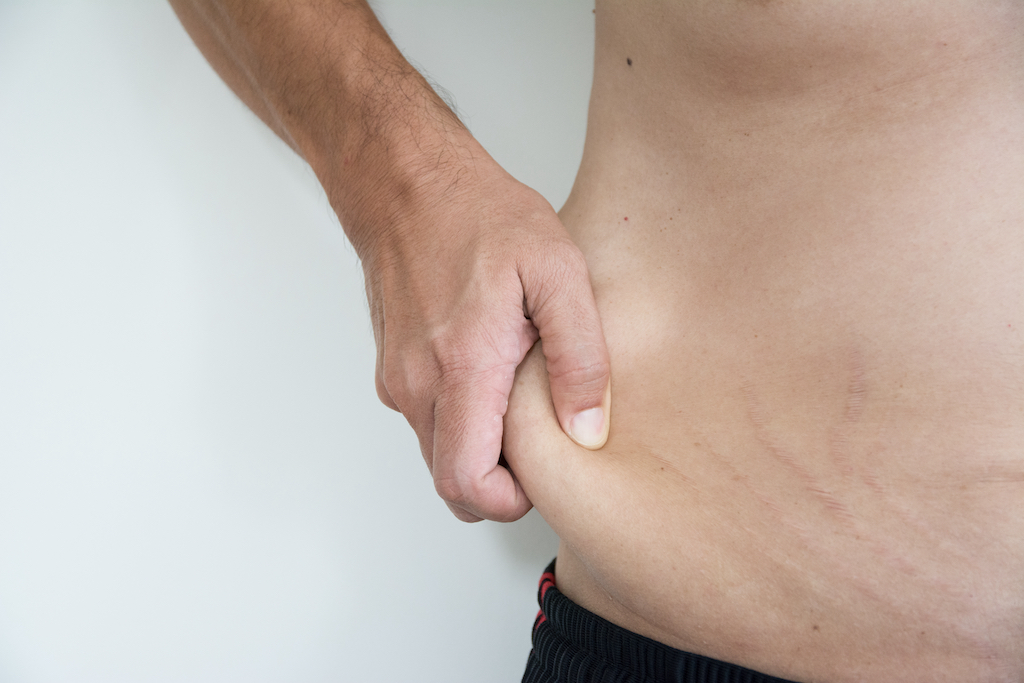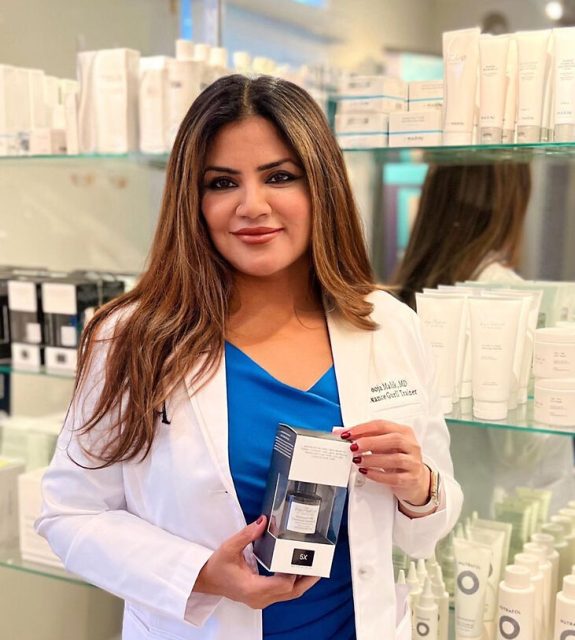Dr. Samuel Lin is a double board-certified Plastic Surgeon and Associate Professor of Surgery at Harvard Medical School who practices in Boston, Massachusetts. Dr. Lin received his Bachelor’s degree in Biomedical Engineering at Northwestern University and was enrolled in the Honors Program for Medical Education at Northwestern University, Feinberg School of Medicine, Chicago, Illinois. Dr. Lin is board certified by both the American Board of Plastic Surgery and the American Board of Otolaryngology-Head and Neck Surgery. Dr. Lin is board certified by two ABMS boards. He is Program Director of the BIDMC-Harvard Plastic and Reconstructive Surgery residency, and Co-Director of the Harvard Aesthetic and Reconstructive Plastic Surgery Fellowship at BIDMC. Dr. Lin has been a Boston “Top Doc” for several years in plastic surgery.
 Photo Credit: Shutterstock
Photo Credit: Shutterstock
Did you just lose a substantial amount of weight? Have a child? And it resulted in a moderate amount of excess skin on your lower abdomen? Similar to a regular tummy tuck, a mini tummy tuck is a surgery that focuses on flattening the abdomen and removing the excess skin. Here Haute Beauty experts Natalie Hassell and Dr. Samuel Lin, MD, FACS address everything you need to know about a mini tummy tuck and what would make you a great candidate.
What can a mini tummy tuck address?
The lower abdominal skin is a common area for stretch marks, so a mini tummy tuck may remove stretch marks in this area by removing the skin. It is important to note that a mini tummy tuck addresses only the area below the belly button whereas a regular tummy tuck addresses the areas above and below the belly button. Because of this, a mini tummy tuck results in a shorter scar than a regular tummy tuck.
How is a mini tummy tuck performed?
A mini tummy tuck is typically performed under general anesthesia or in selected cases in the office/surgicenter. In a mini tummy tuck, an incision is made around the bikini line (similar to or below the placement of a c-section scar), the lower abdominal muscles may be tightened, and excess skin is removed from the lower belly. Drains are inserted to prevent fluid from building up, and the incision is then carefully closed. Unlike a regular tummy tuck, there is no need to re-create a belly button opening with a mini tummy tuck as the original belly button remains intact.
Like any surgery, a mini tummy tuck carries risks. Potential risks of a mini tummy tuck include scarring, bleeding, bruising, infection, dissatisfaction with the cosmetic result, and, rarely, blood clots.
 Photo Credit: Shutterstock
Photo Credit: Shutterstock
Who's a good candidate?
A mini tummy tuck is for the person with a moderate amount of loose skin in the area below the belly button. Additionally, they must be healthy enough to undergo elective surgery. Someone with loose skin above and below the belly button would be a better candidate for a regular tummy tuck than a mini tummy tuck because a mini tummy tuck can only address the area below the belly button.
If a patient has rectus diastasis they would be a better candidate for a regular tummy tuck than a mini tummy tuck, since this can be more adequately addressed with a regular tummy tuck. Patients with a large amount of excess skin would also require a more extensive procedure than a mini tummy tuck. If a patient plans to have more children, it may be ideal to wait until after childbearing is complete as any future pregnancy will compromise the results of the tummy tuck. Patients who smoke are not good candidates for any type of tummy tuck because smoking can interfere with the healing process.
How to prepare for surgery?
Patients interested in a mini tummy tuck should prepare for surgery by first consulting with a board-certified plastic surgeon. Patients looking to have a mini tummy tuck should also consider the financial and time commitment needed to have and recover from surgery. The price of a mini tummy tuck can vary based on the surgeon, geographic location, and other factors. According to data from RealSelf, the average cost of a mini tummy tuck is $6,400. This price does not include related expenses such as garments or prescription medications, so the total costs associated with a mini tummy tuck are likely to be higher.
An understanding of the recovery process can help patients prepare for surgery. Most patients will go home on the day of surgery, resume some light activity about two to three days after surgery, and resume light work two weeks after surgery. Stitches are usually removed approximately two weeks after surgery. Heavy lifting and strenuous exercise are generally limited for the first six weeks after surgery, but light exercise such as walking can resume earlier with your surgeon’s guidance.
During your recovery, you may be advised to wear a compression garment to limit swelling and help maintain the contour of the results. Any patient interested in a mini tummy tuck should consult with a board-certified plastic surgeon to learn more about the process and their options.
References:
- Mini Tummy Tuck: The Ultimate Guide to Partial Abdominoplasty. Accessed April 17, 2022. https://www.realself.com/surgical/mini-tummy-tuck
For more information, visit Dr. Samuel Lin's social media:























